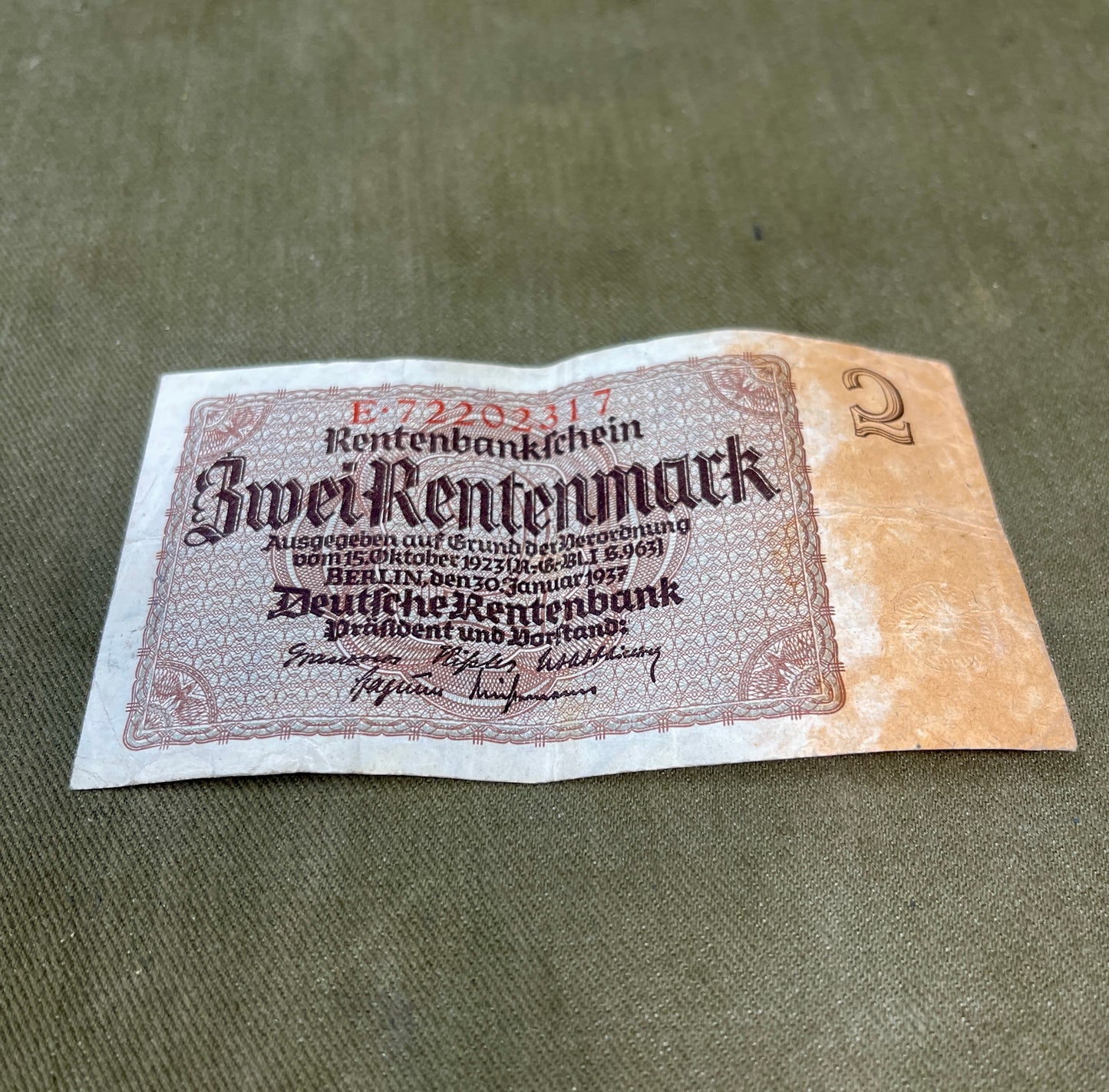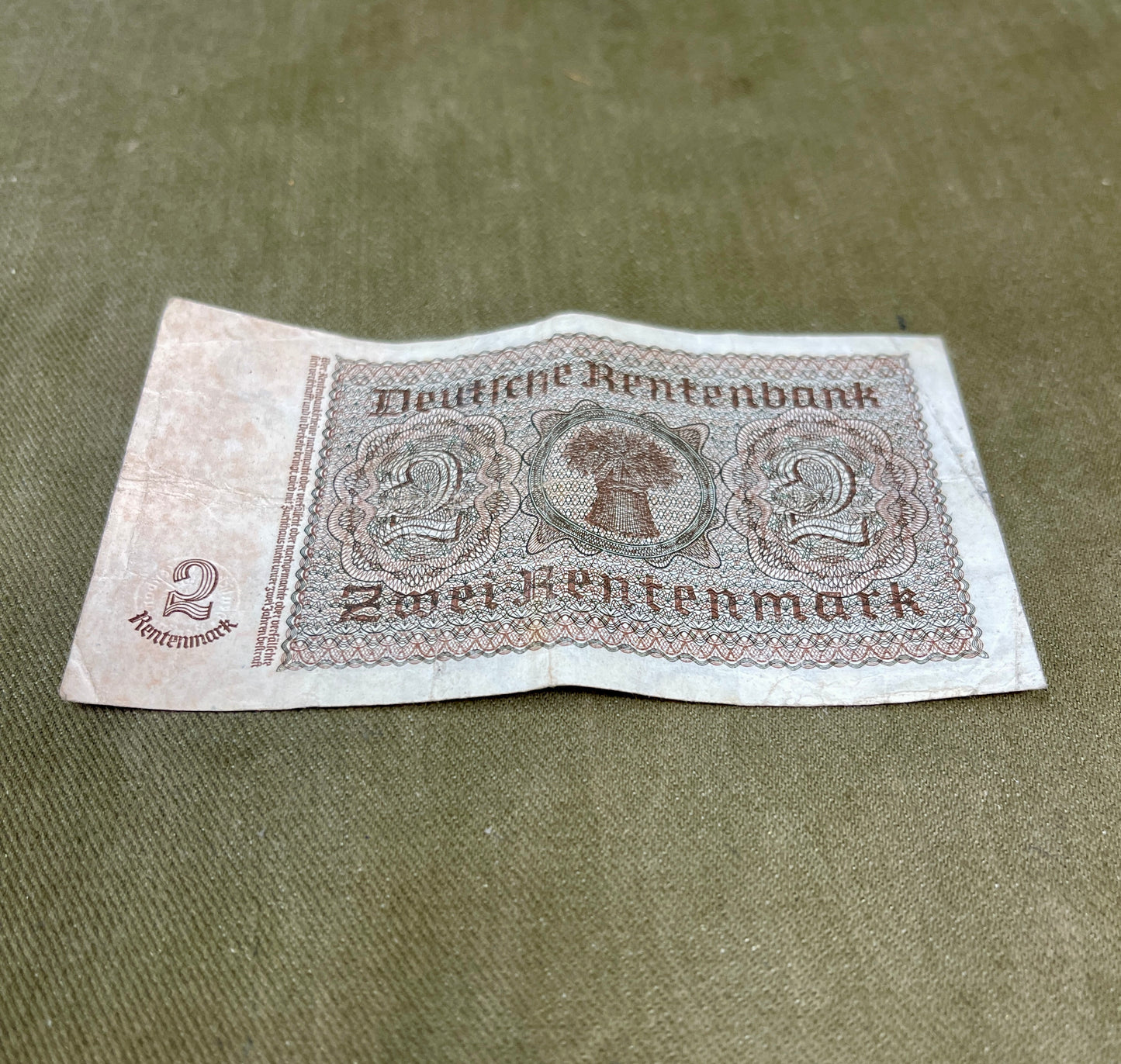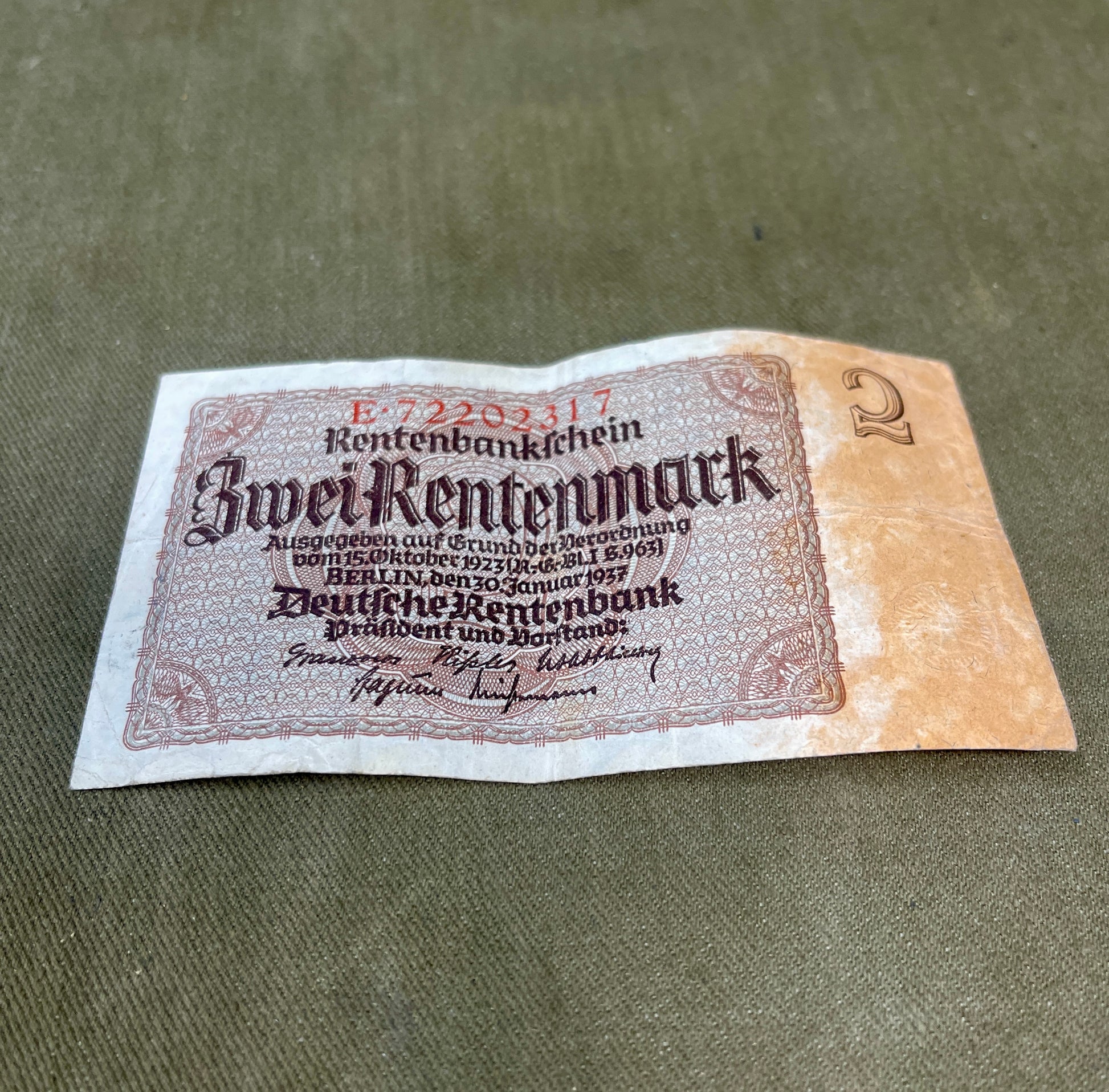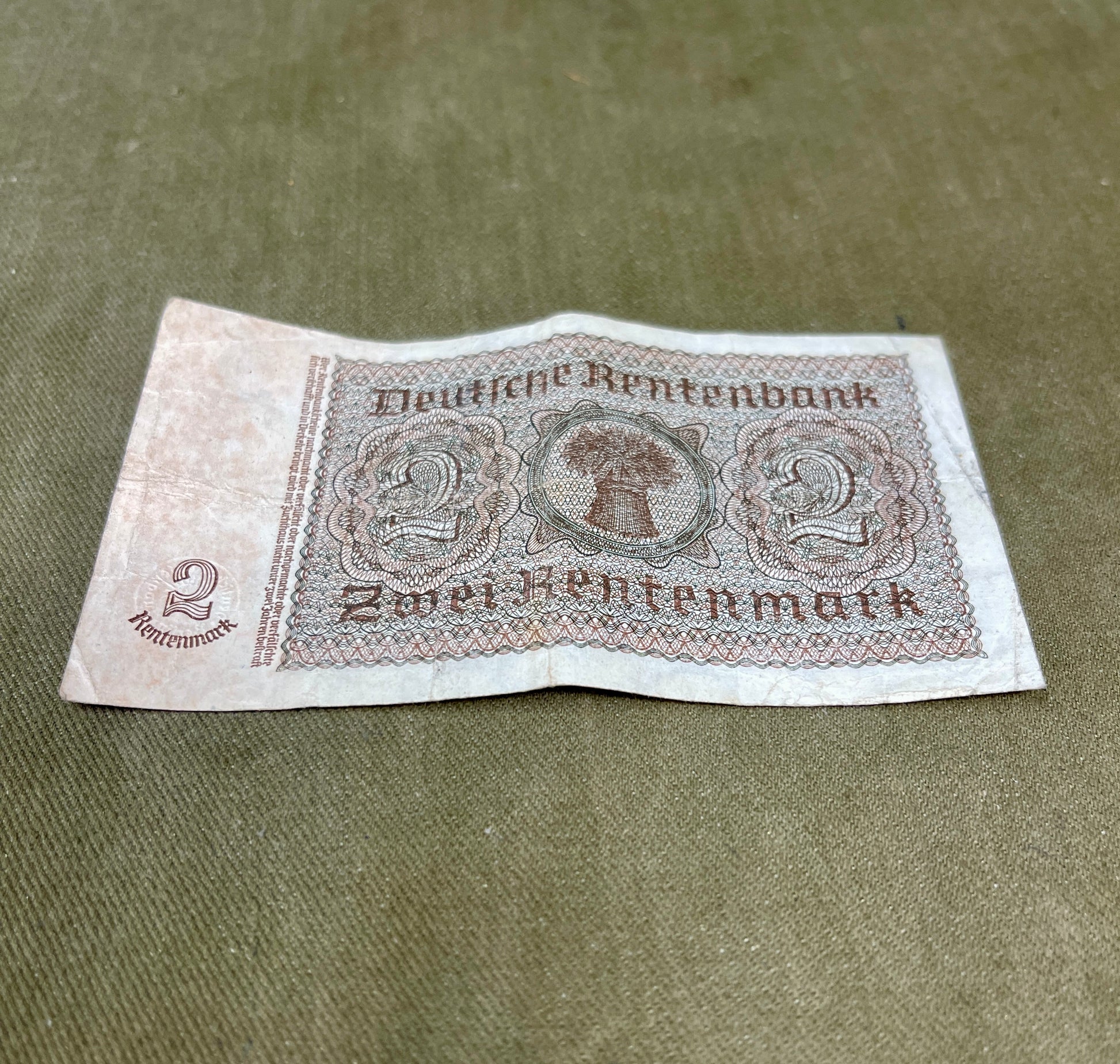Tom & Jerrys Militaria and Collectables
Reichsbanknote Two Rentenmark Banknote – 1930s German Currency
Reichsbanknote Two Rentenmark Banknote – 1930s German Currency
Couldn't load pickup availability

Product Condition
Product Condition
Shipping & Returns
Shipping & Returns
Shipping
All orders are subject to a delivery, packing & handling charge. The correct charges will be automatically calculated via our Shopping basket ordering system and are based on the total weight of your order, your location, and our normal method of despatch. Please be aware that we reserve the right to alter any miscalculation, plus or minus, and you will be notified prior to shipping of any changes.
When shipping items, we use the UK Royal Mail, EVRI, DPD and Parcel Force in the event of a parcel arriving with contents damaged ALL the packaging must be kept for inspection by the delivering shipping contractor whoever that contractor is, failure to adhere to this WILL result in ANY claim being denied.
We do ship internationally and will always use a Tracked and Signed for service. We strive to use the best and most economical shipping services available
All shipping, insurance and import charges will be borne by the customer.
All lots are shipped at the buyers risk no compensation will be offered for items lost or broken in transit. Alternatively you can pay for your own courier.


Product Description
Reichsbank note, valued at 20,000 marks, was distributed in Germany from February to November 1923.
German efforts to finance World War I sent the nation into debt. Following their defeat, the Treaty of Versailles obligated Germany to pay reparations to several countries, which increased the nation’s financial struggles. The German government attempted to solve this problem by printing more money, which led to severe inflation.
The inflation grew to critical levels between 1922 and 1923, when the exchange rate of the mark to the United States dollar went from 2,000 marks per dollar to well over a million in a matter of months.
The government printed higher and higher denominations but was unable to keep up with the plunging rates. Germans began using worthless bills as kindling, wallpaper, and children’s crafts. The emerging National Socialist German Worker’s (Nazi) Party frequently used the bills to their advantage, writing anti-Semitic messages on them, which blamed Jews for Germany’s financial problems.
In order to stabilise the economy, the German government established the Rentenbank.
This genuine Reichsbanknote Two Rentenmark banknote offers a fascinating glimpse into Germany’s interwar economy. Issued by the Deutsche Rentenbank during the 1930s, the note represents the stabilized currency that replaced the hyperinflated Papiermark of the 1920s. Printed in fine detail with ornate borders, Gothic script, and the Reichsbank seal, it reflects the artistry and financial transition of pre-war Germany.
Each note displays authentic period wear, adding to its historical character and appeal. The reverse features intricate engraving typical of early 20th-century German banknotes. An ideal piece for collectors of historical currency, WWII memorabilia, or anyone interested in European economic history, this Two Rentenmark note stands as a tangible reminder of Germany’s recovery and transformation between the wars.
A well-preserved and affordable collectible, perfect for display, framing, or as a teaching example of early 20th-century monetary design.


